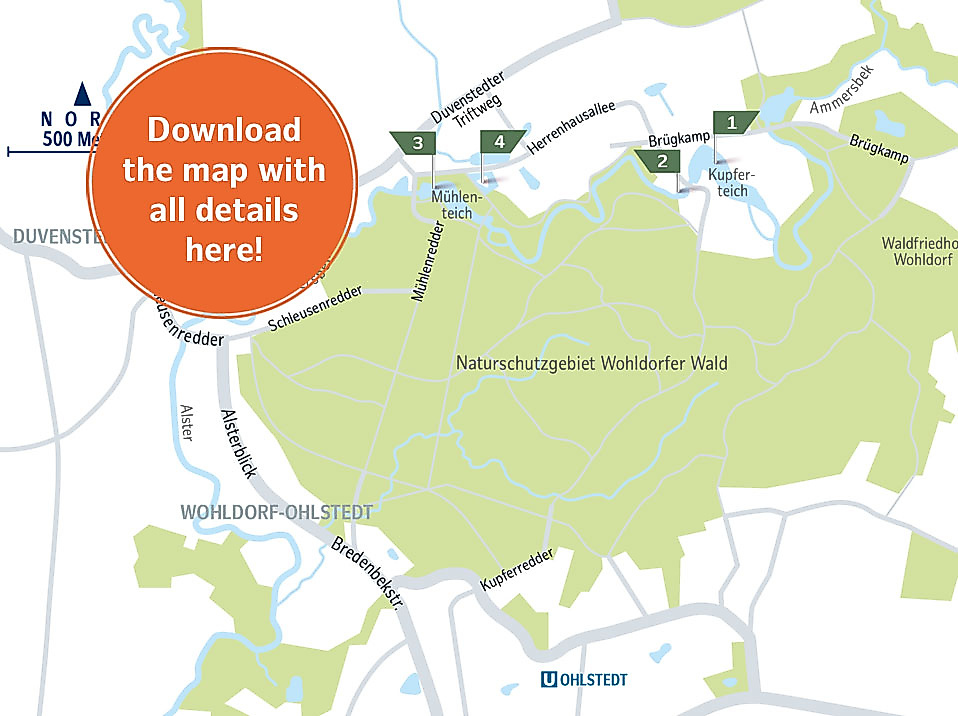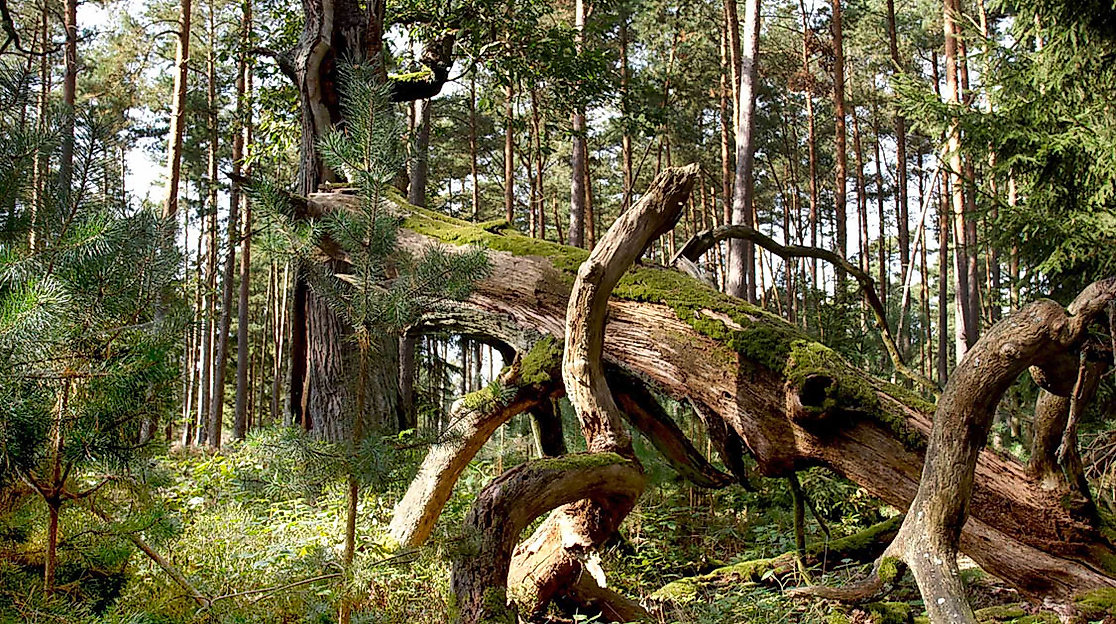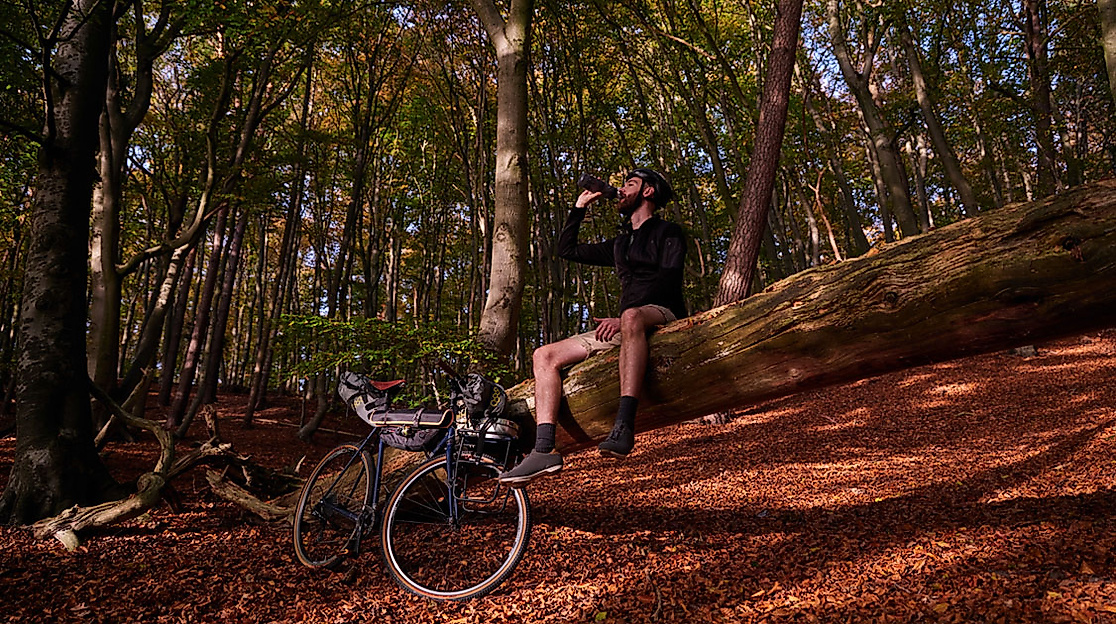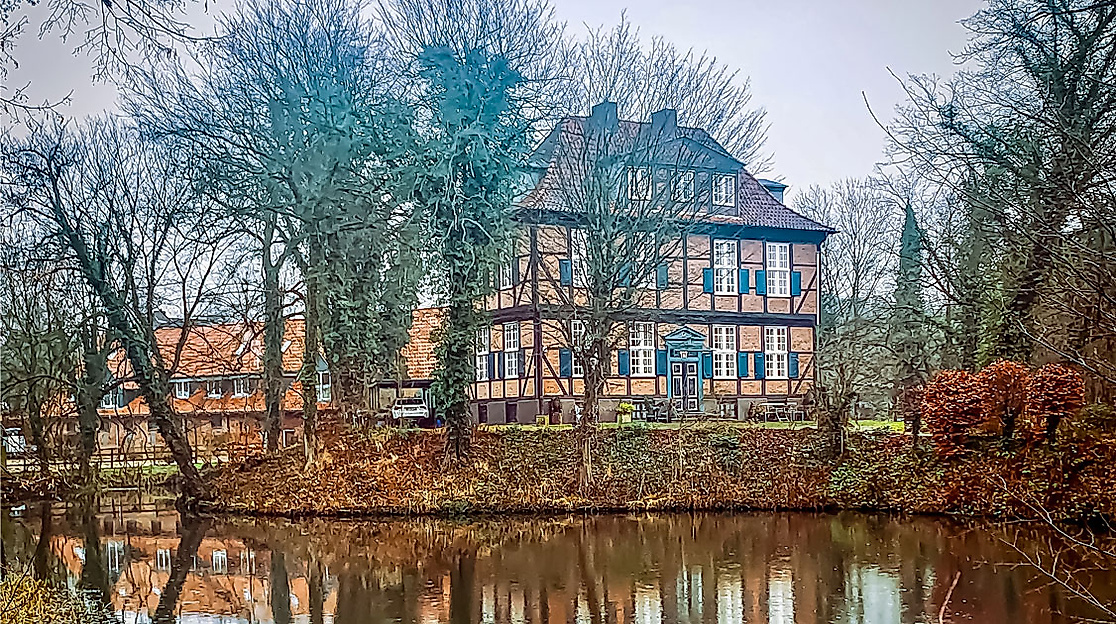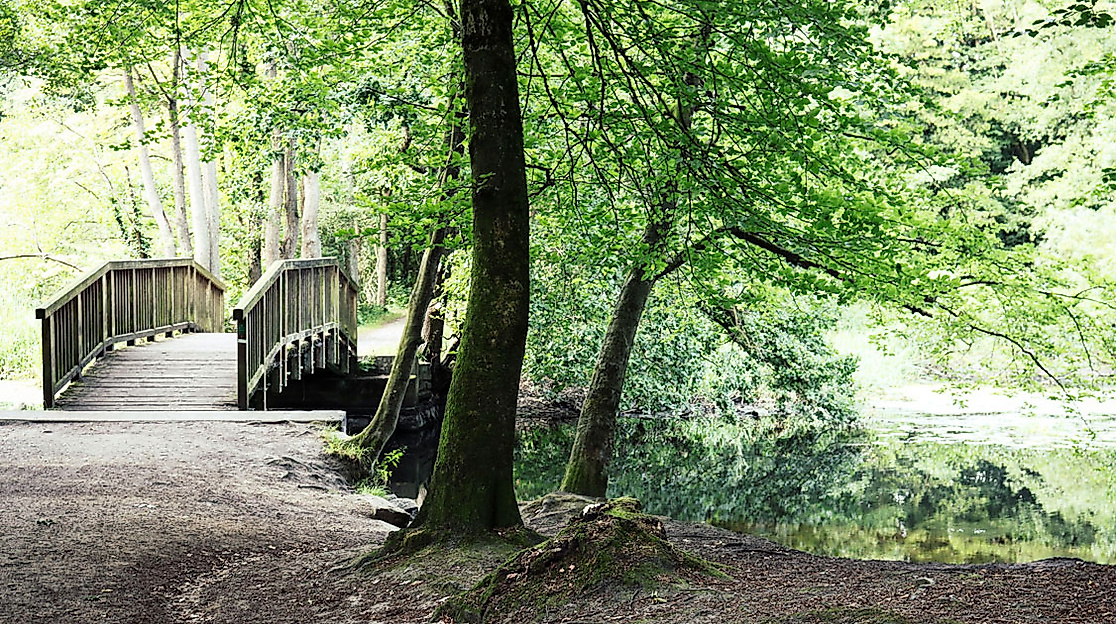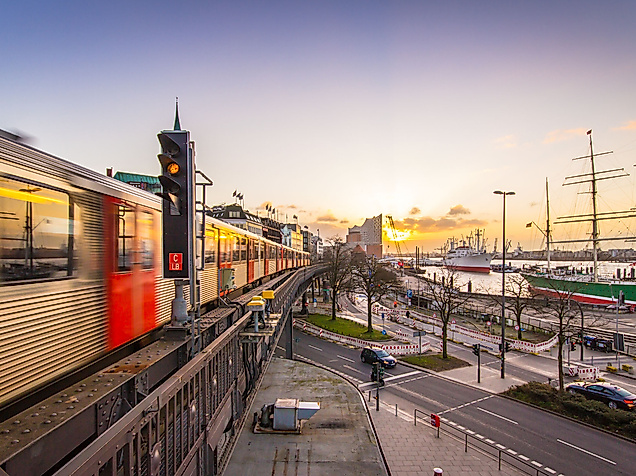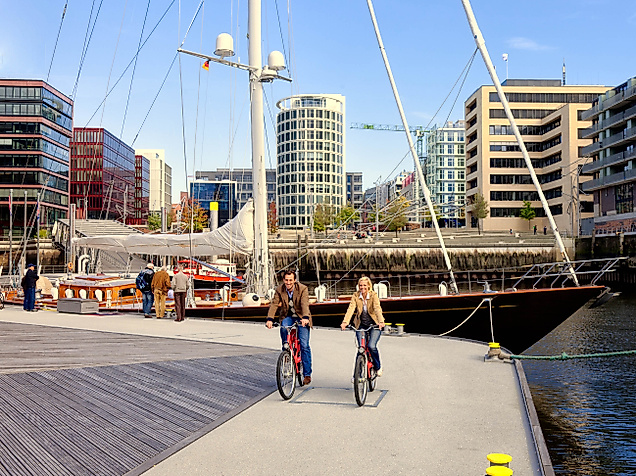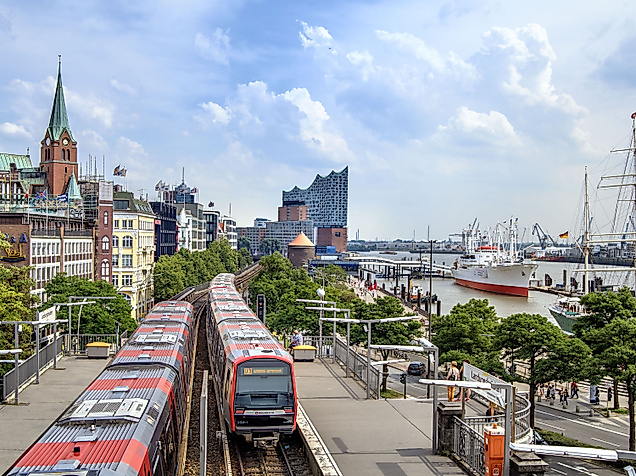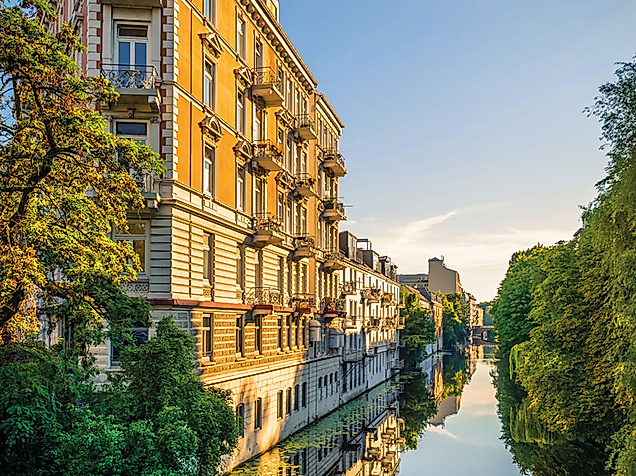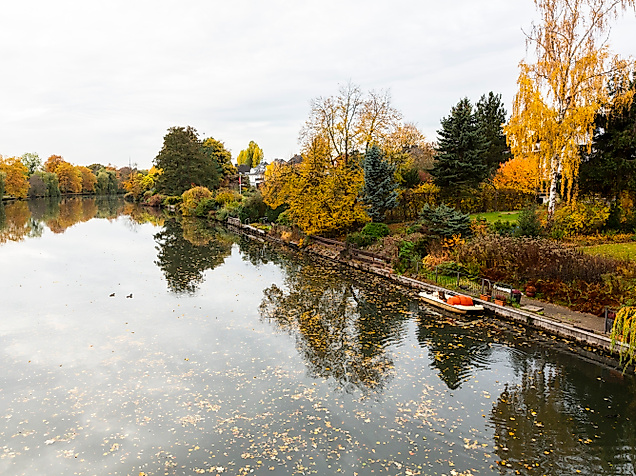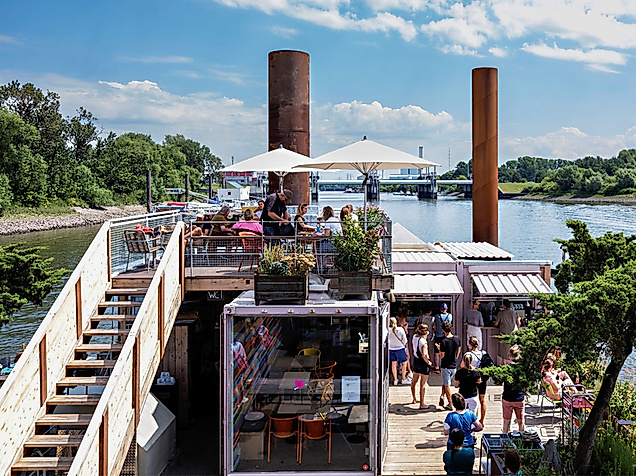In certain light conditions, this part of the Walddörfer seems almost enchanted by particularly beautiful stretches of water. Flowing in from the north, the Ammersbek, a tributary of the Alster Lake, was dammed in two places, creating the Kupferteich and the Mühlenteich ponds. The Kupferteich with its historic copper mill, which, in the old days, would be driven by the flow of water, is an idyllic location that exudes a special sense of tranquillity. The Kupferhof, a neo-baroque yellow villa on a cobblestone path, was used by the Wehrmacht to coordinate German agents during WW2. Today, the building provides short-term accommodation for children with disabilities, allowing them to recharge their batteries in nature with their parents. Further back in history, from 1912 onwards, the villa served as a country residence for two merchant families from Hamburg.
From there, you continue along the Ammersbek to Herrenhäuser Allee, where you will find a stately mansion dating back to 1714. Surrounded by water, this elegant mansion on a little island used to accommodate members of the Hamburg Senate who would collect taxes from the residents of the Walddörfer villages. In modern times, the house was transformed into a cultural meeting place thanks to the charitable Alfred Toepfer Foundation. Astrid Lindgren, the famous children’s book author, repeatedly stayed at the manor house and also celebrated her 80th birthday there in 1987. Today, the listed building is occupied by private individuals.
Once you have reached the southern part of the forest again, you can walk back to Ohlstedt U-Bahn station, from where you can take the U1 back into the city centre.
As a route planner, we strive to put together particularly diverse routes through Hamburg's most beautiful areas. Did you like our Forest route? We look forward to receiving your feedback. To discover even more unique places in Hamburg, take a look at our city map.

